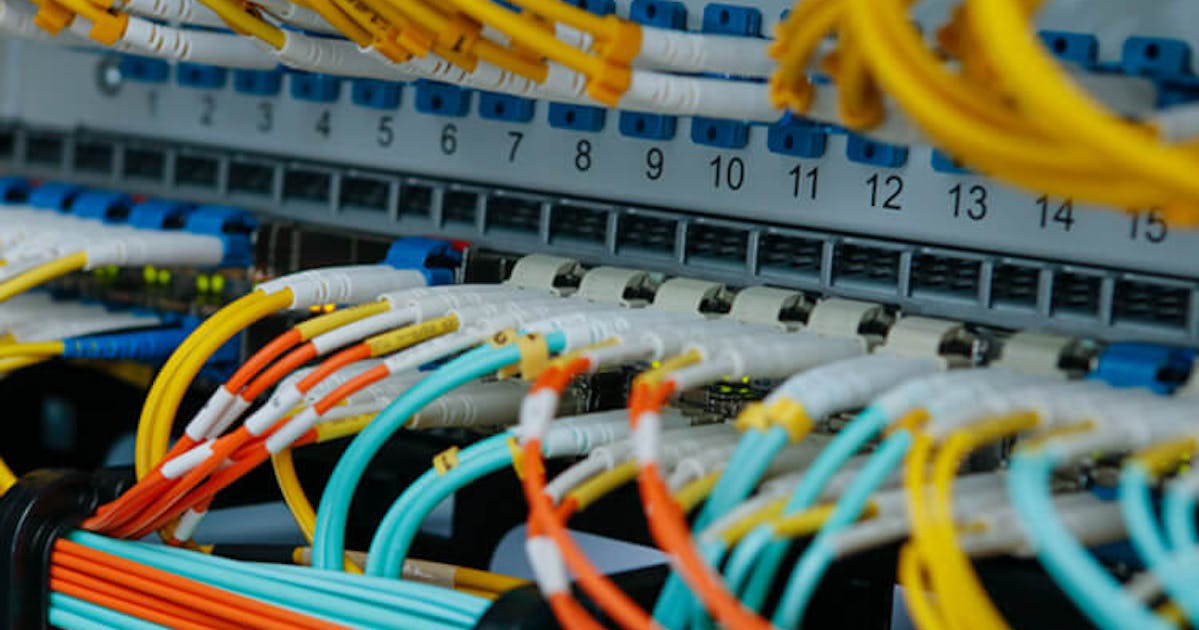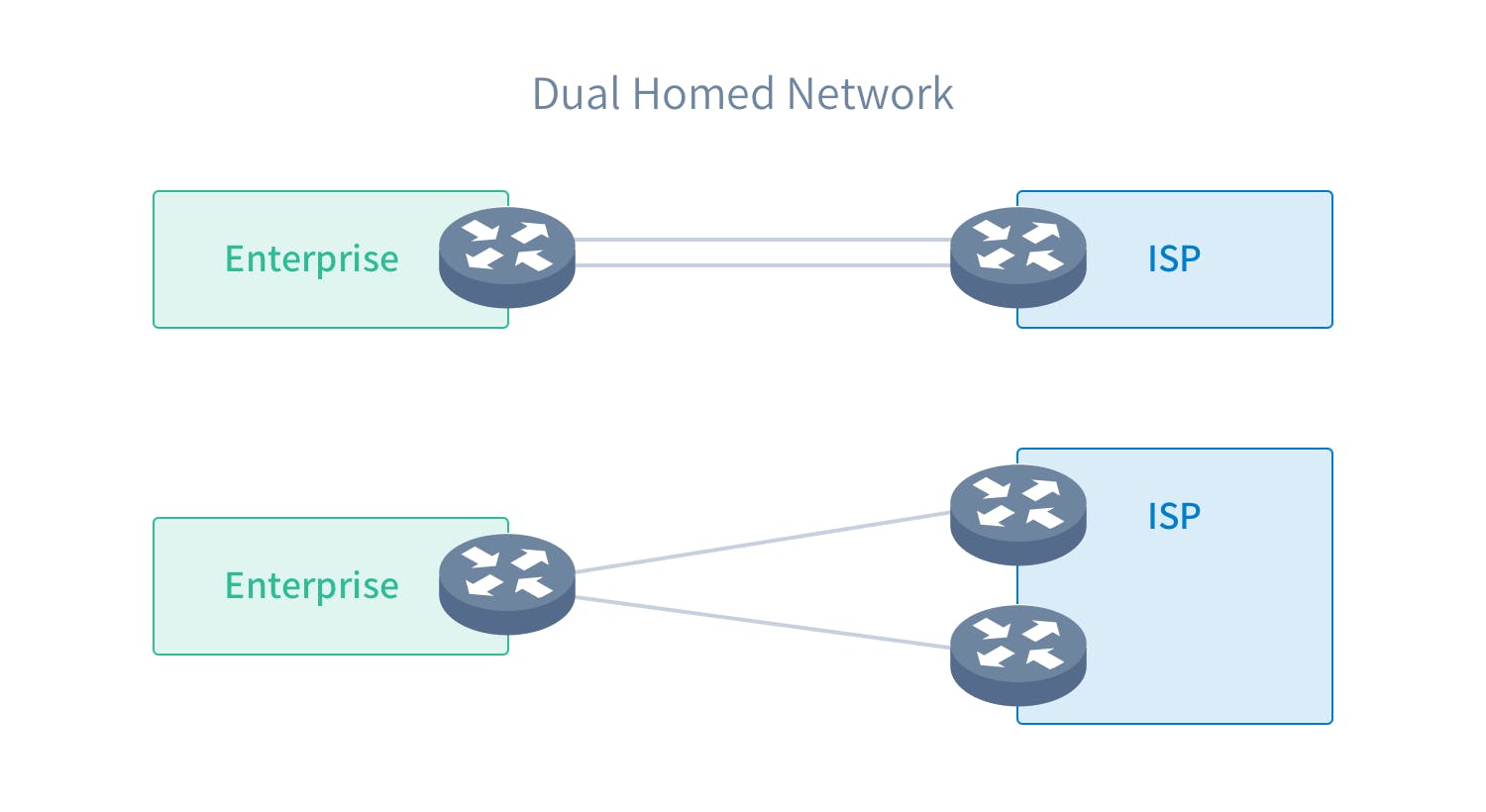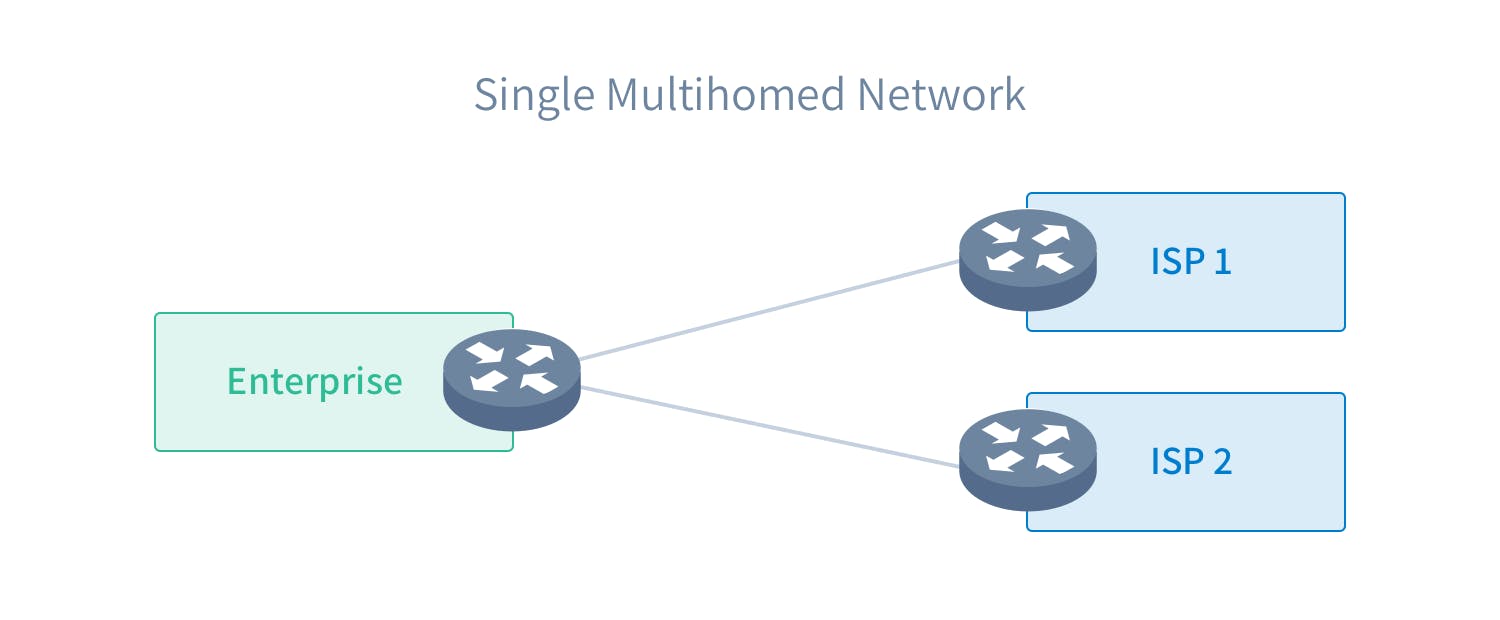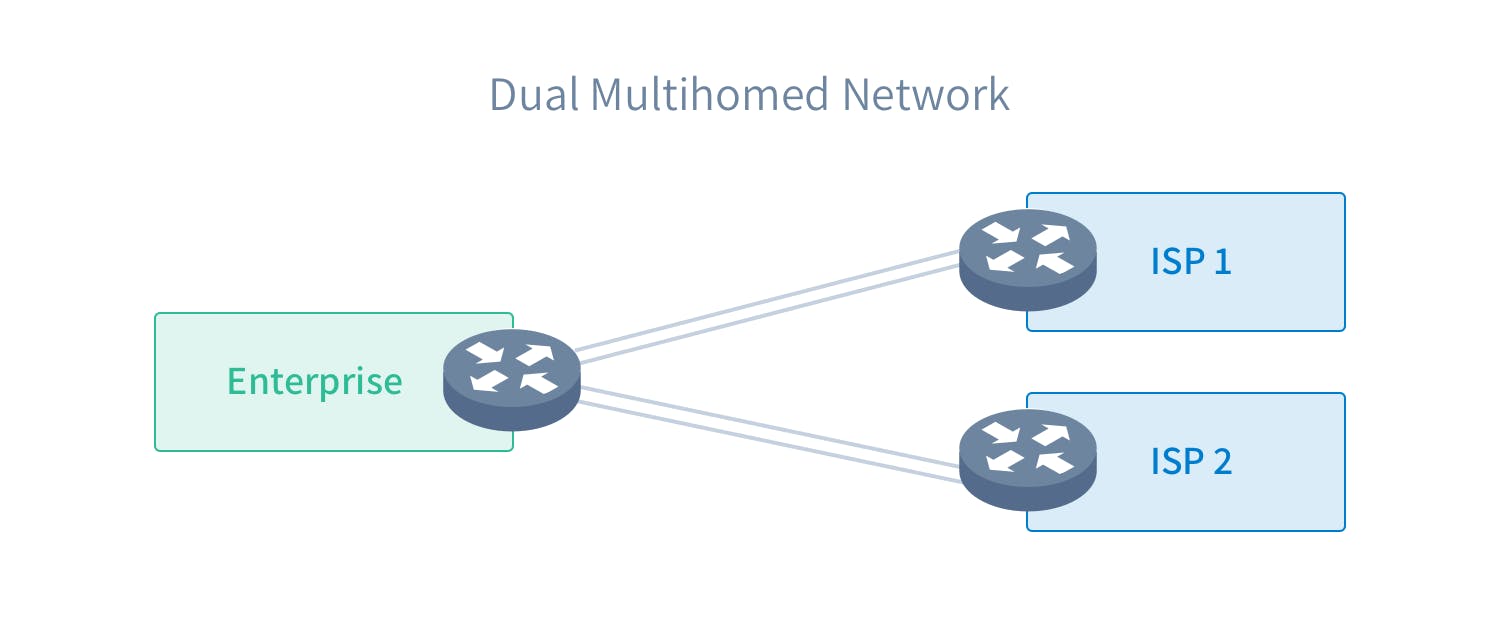
· 4 min read

When it comes to network management, network engineers often use the terms single-homed and multi-homed network when talking about network upstream topology that describes how a customer is connected to one or more ISPs (using BGP). And even though the specific details of BGP routing, router configuration and other advanced procedures aren’t essential knowledge for the average online business owner, knowing how running your application on a single or multi-homed network might impact your business should be.
Below we’ll go through the main types of ISP connections and their specifications. Heads up, the differences are major and if you’re not yet familiar with the implications of both set-ups, this is something you need to read.
The terms multi-homing / single homing are generally used when describing the types of ISP connections a given host or provider has from their edge routers to the internet.
A single-homed topology means that you have a single connection to only one ISP. With this set-up, one can use static/default routes provided by the ISP to handle all traffic destined for all outside networks. Additionally, the host can announce its public network and the ISP announces the default route to the host.
As there is only one possible exit node for the network traffic, no BGP is normally needed.

The advantage of this set up is reduced costs – The host pays less for the overall transit as buying bulk from a single provider means better deals. And as the traffic is routed through a default route provided by the carrier, the costs for network management itself are significantly lower (no need for a network administrating team and a live network monitoring system).
If the lowest price possible is what you’re after, this set-up might be for you. However, the network itself won’t be as efficient and reliable (more on that below.)
In a dual-homed set-up a host is still connected to the outside networks via only one ISP, but with two routers. The extra piece of hardware provides a bit of redundancy on the host side.

A multi-homed network (using BGP multi-homing) is a network connected to two or more ISPs. This topology is primarily set up for three main reasons: Redundancy, Reliability, Efficiency.
When linked to the internet via two or more ISPs the host protects itself against upstream failures – if an ISP is experiencing issues within their network, the host can automatically switch production traffic to an alternative path within seconds, avoiding network downtime.
You as a customer run business-critical applications on the host servers connected to the internet and expect the service to run reliably no matter what. If a host does not have redundant upstream connections, it signals a lack of reliability which can mean disruption to your business and loss of clients/revenue.
Another huge benefit is, that with multiple ISPs, decisions on what best network path to choose can be made. So by running a multi-homed network, you not only increase the redundancy but also the performance of the network.


It all comes down to network performance. It is possible to run a global, single-homed network (and many providers do), one can do so by having an agreement with a single TIER 1 carrier. The textbook definition of such a transit provider is that it can reach every other network on the Internet without purchasing IP transit or paying settlement fees.
The reality, however, is very far from this definition.
Local networks providing connections to end users (which are sometimes called “eyeball networks”) often restrict access to their network even from TIER 1 carriers. Some examples of “eyeball networks”: Orange, Telefonica, Hinet, Deutsche Telekom, Comcast, ATT or Liberty Global/UPC.
The type of arrangements TIER 1 carriers have with these local network determines the quality of the connectivity, however, no single carrier has high-performing links to all of them.
Therefore, to maintain the same level of network quality worldwide a host must have partnerships with multiple carriers.
Bottom line, if you’re distributing content worldwide and need quality connectivity to even the most isolated networks with 100% uptime, then a host with a diverse, multi-homed network is a must-have for your business.
Research on the network connectivity structure should be part of everyone’s due diligence before committing to any purchase from a provider. With DataPacket.com, you have the guarantee that we do our best to maintain and constantly improve our dual multi-homed network to have quality network access even to harder to reach destinations in all corners of the world.
Founded in 2014, DataPacket is a dedicated server provider operating a global low-latency network. With a footprint of 63 locations across 6 continents, DataPacket helps businesses–including gaming and video streaming companies–to deliver great online experiences.